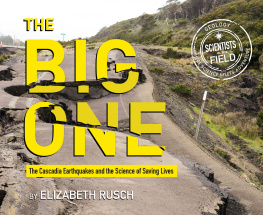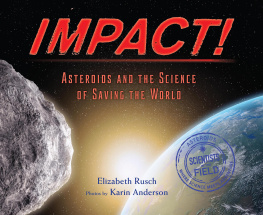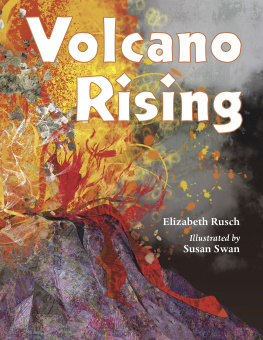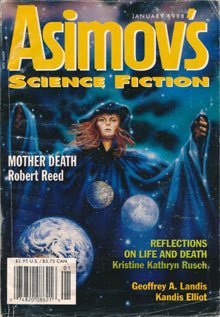Elizabeth Rusch - The Big One
Here you can read online Elizabeth Rusch - The Big One full text of the book (entire story) in english for free. Download pdf and epub, get meaning, cover and reviews about this ebook. year: 2020, publisher: HMH Books, genre: Art. Description of the work, (preface) as well as reviews are available. Best literature library LitArk.com created for fans of good reading and offers a wide selection of genres:
Romance novel
Science fiction
Adventure
Detective
Science
History
Home and family
Prose
Art
Politics
Computer
Non-fiction
Religion
Business
Children
Humor
Choose a favorite category and find really read worthwhile books. Enjoy immersion in the world of imagination, feel the emotions of the characters or learn something new for yourself, make an fascinating discovery.
- Book:The Big One
- Author:
- Publisher:HMH Books
- Genre:
- Year:2020
- Rating:3 / 5
- Favourites:Add to favourites
- Your mark:
- 60
- 1
- 2
- 3
- 4
- 5
The Big One: summary, description and annotation
We offer to read an annotation, description, summary or preface (depends on what the author of the book "The Big One" wrote himself). If you haven't found the necessary information about the book — write in the comments, we will try to find it.
The Big One — read online for free the complete book (whole text) full work
Below is the text of the book, divided by pages. System saving the place of the last page read, allows you to conveniently read the book "The Big One" online for free, without having to search again every time where you left off. Put a bookmark, and you can go to the page where you finished reading at any time.
Font size:
Interval:
Bookmark:
To all the scientists working to keep us safe
Copyright 2020 by Elizabeth Rusch
All rights reserved. For information about permission to reproduce selections from this book, write to or to Permissions, Houghton Mifflin Harcourt Publishing Company, 3 Park Avenue, 19th Floor, New York, New York 10016.
hmhbooks.com
The illustrations in this book were done digitally in Procreate.
Cover photography 2020 by Haje Jan Kamps/EyeEm, Getty Images
Cover design by Nina Simoneaux and Andrea Miller
The Library of Congress has cataloged the print edition as follows:
Names: Rusch, Elizabeth, author.
Title: The big one : the Cascadia earthquakes and the science of saving lives / Elizabeth Rusch.
Other titles: Cascadia earthquakes and the science of saving lives
Description: Boston : Houghton Mifflin Harcourt, 2020. | Series: Scientists in the field | Audience: Age 1012. | Audience: Grade 4 to 6. | Includes bibliographical references.
Identifiers: LCCN 2019016728 | ISBN 9780544889040 (hardcover)
Subjects: LCSH: Cascadia Subduction ZoneJuvenile literature. | EarthquakesNorthwest, PacificJuvenile literature. | Earthquake predictionNorthwest, PacificJuvenile literature. | Plate tectonicsNorthwest, PacificJuvenile literature. | Plate tectonicsJuvenile literature. | Earthquake zonesNorthwest Coast of North AmericaJuvenile literature. | Subduction zonesNorthwest Coast of North AmericaJuvenile literature. Classification: LCC QE535.2.N6 R87 2020 | DDC 551.2209795dc23
LC record available at https://lccn.loc.gov/2019016728
eISBN 978-0-358-33579-5
v1.0720
Photo Credits can be found on .
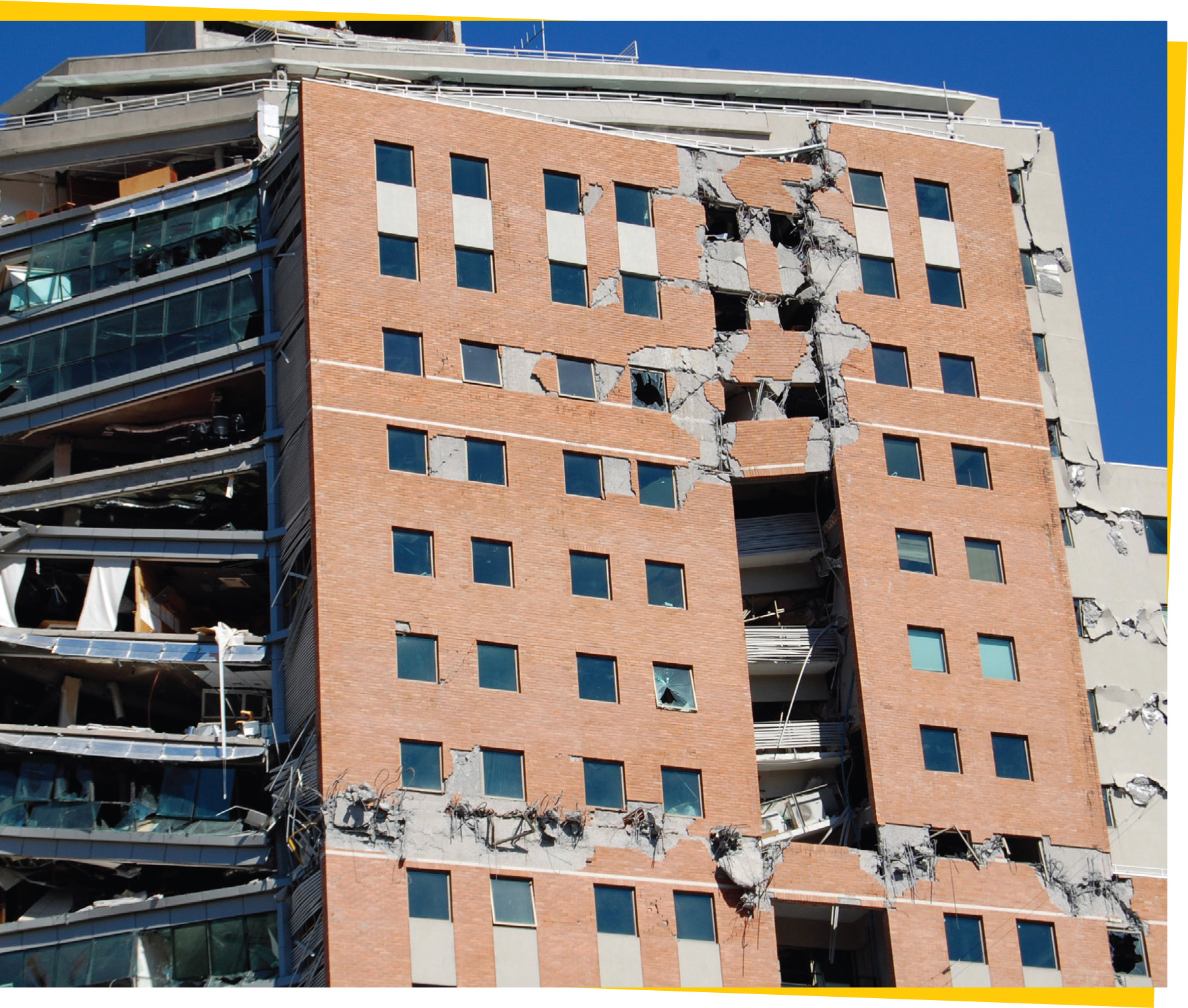
The damage to a new office building in the city of Concepcin, Chile, wrought by the 8.8 magnitude earthquake in 2010.
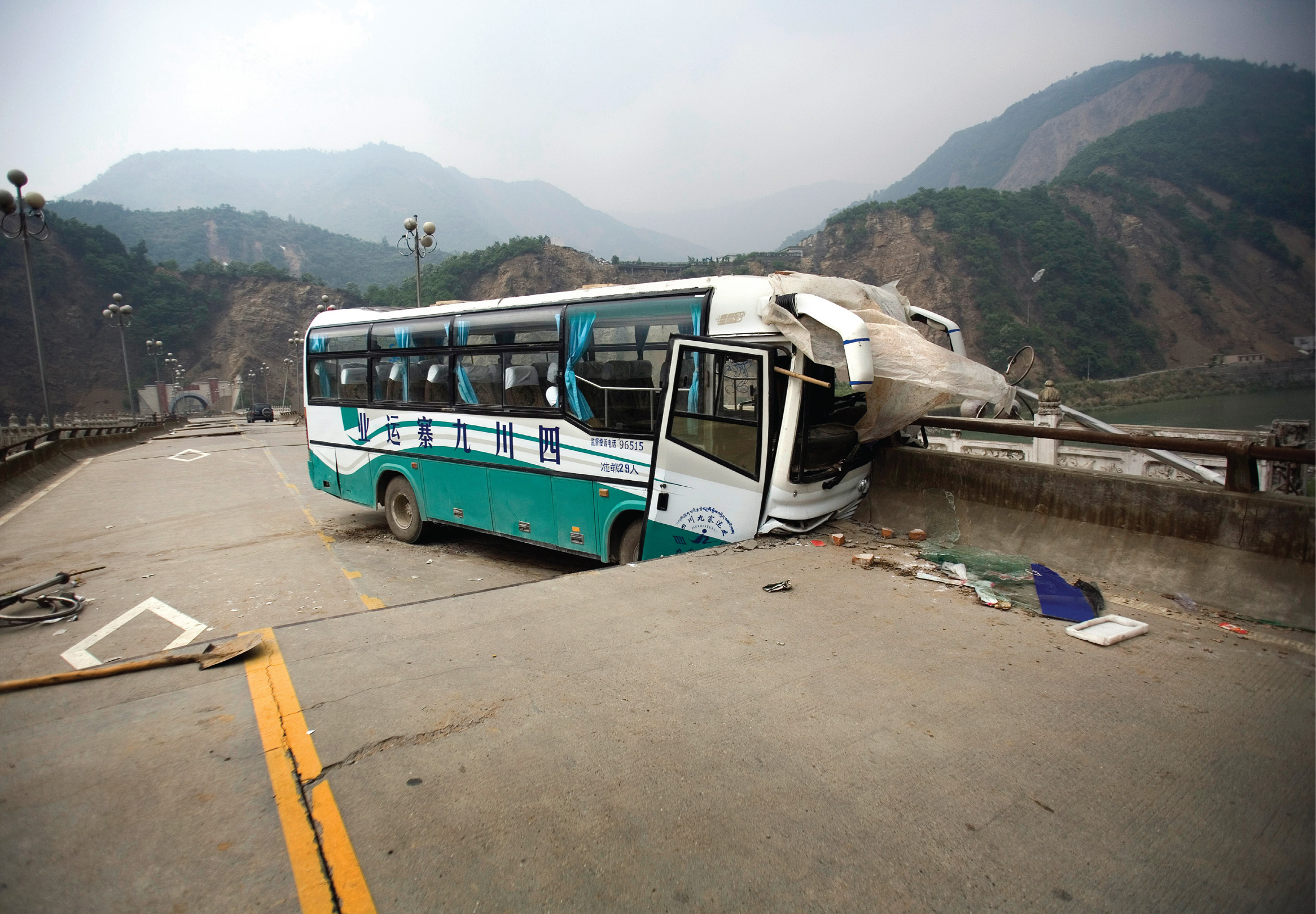
A bus crash that occurred during the 8.0 magnitude earthquake in Sichuan, China, in May 2008.
AT FIRST YOU DONT NOTICE THE SHAKING. You think a bus or truck is rumbling by. But the trembling doesnt stop. A few seconds later, paintings and photos on the wall swing slightly. Glasses and dishes rattle. Thud. Bang! Objects all around youcellphones, water bottles, booksslide off surfaces and clatter to the ground. Within a minute, the floor beneath your feet heaves as the rumble becomes louder and louder. You dive under a table and hug one of the legs tightly as a window shatters. Couches, chairs, and cabinets pitch back and forth. A heavy desk jiggles across the room as a bookshelf lurches, then leans and topples.
Outside, trees bend back and forth as if their trunks were made of elastic. Skyscrapers sway like reeds. Sidewalks and roads ripple and heave. People lose their footing and stumble to their knees as the rumble becomes a roar. Roof tiles crash, chimneys disintegrate, and walls begin to crack, crumble, and collapse.
Two minutes into the earthquake, the entire 620-mile (1,000-kilometer) stretch of the Pacific Northwest of the United States and Canada undulates. The shaking reaches millions of people, from Vancouver, British Columbia, through Seattle, Washington, and Portland, Oregon, all the way down to Mendocino, California.
But the powerful trembling has only just begun. While most earthquakes last about ten to thirty seconds, this earthquake, called a Cascadia earthquake, could last three to six minutes.
How long is six minutes? Long enough to play two songs on the radio. Long enough to drain a full bathtub a couple of times. Long enough to destroy roads, bridges, schools, and hospitals; derail trains and damage power and fuel lines; long enough to interrupt water supplies and disrupt cell, Internet, and phone service.
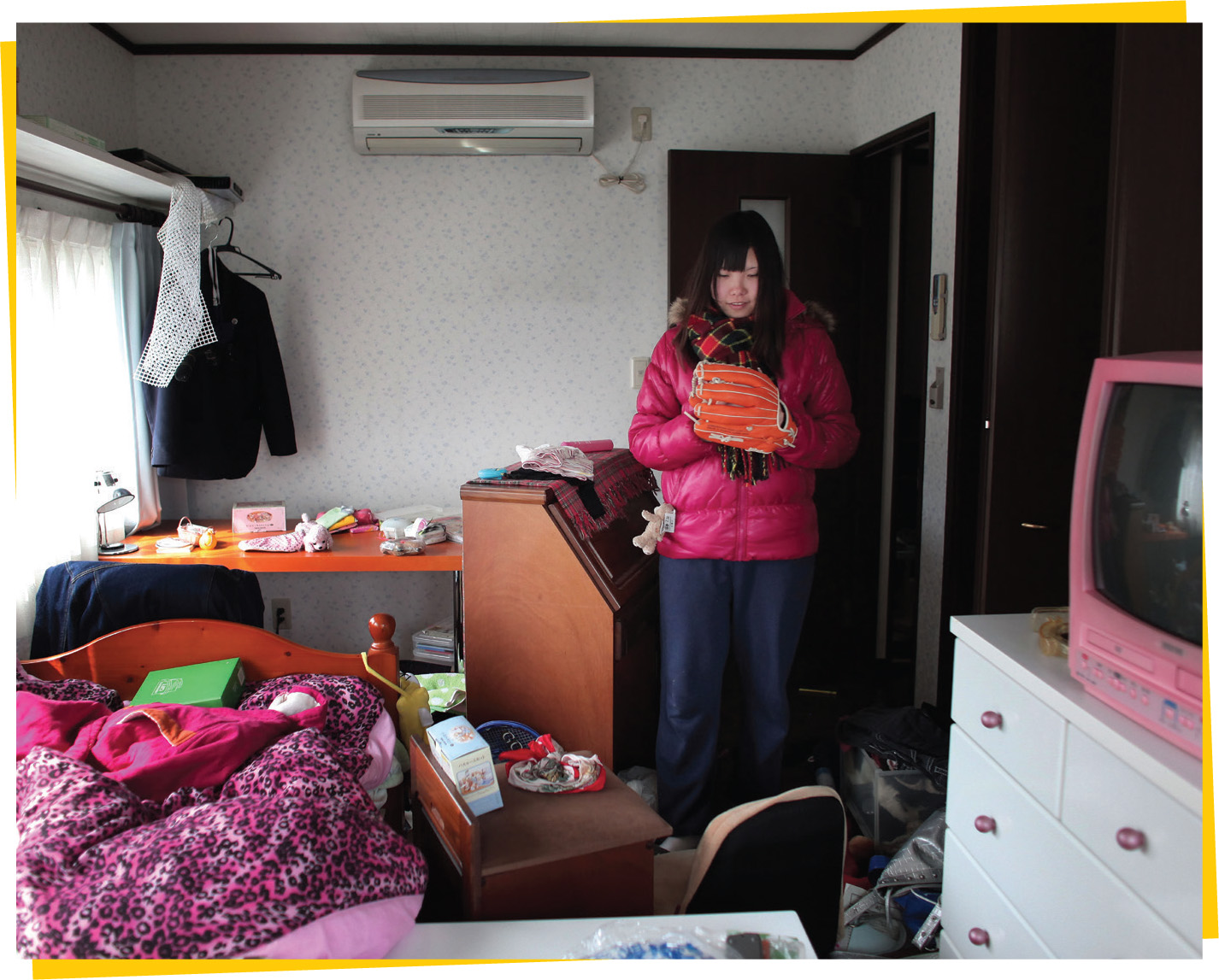
Murakami Misato surveys the damage done to her bedroom on the fourth floor of an apartment block in Kesennuma, Japan, after a 9.0 magnitude earthquake struck on March 11, 2011.
Imagine what your school or home would look like in the aftermath of such an earthquake: furniture knocked down, the floor a mess of shattered objects mixed with glass shards and plaster and paint dust. In your neighborhood, roads are buckled, houses have slid off their foundations, downed power lines thrash and crackle, and water spurts from broken pipes. Smoke from fires drifts by as car alarms and sirens scream.
If youre on the Pacific Northwest coast, the situation is much worse. Land all along the shore has dropped as much as six feet (almost 2 meters) and the quaking has been more violent. As soon as the shaking stops, you bolt as fast as you can to high ground. The ocean recedes behind you, baring a long expanse of sand and mud. Offshore, the ocean rises up like a dam about to burst. Twenty minutes later, with an ominous gurgling whoosh, a series of unstoppable swells, called a tsunami, speeds into shore. The water surges inland, lifting boats, cars, piers, and even buildings with great crunches and crashes.
The current is so powerful that no one can remain standing in even knee-deep water. You watch from a high hill for hours as the roiling, debris-filled water rises and spreads across roads, yards, playgrounds, and parking lots, scouring the ground again and again. When the tsunami finally recedes, it leaves behind a wasteland.
The Pacific Northwest can be an idyllic place to live, with its endless beaches, lush forests, rolling coastal range, bubbling waterfalls, and glacier-capped volcanic peaks. Temperatures are mild and the region suffers no hurricanes or typhoons, few thunderstorms, and even fewer tornadoes.
And just thirty years ago, no one suspected that a disaster like a mega-earthquake could ever happen there. California, with its massive system of faults, including the San Andreas, was the place for dangerous earthquakes. Every year Californians are jostled by several hundred earthquakes greater than magnitude 3.0, and fifteen to twenty greater than magnitude 4.0. In the last hundred years, California has suffered forty earthquakes between 6.0 and 6.9 magnitude and sixteen with magnitudes in the sevens.
In contrast, the Pacific Northwest seems remarkably peaceful, with just a handful of small earthquakes causing noticeable shaking each year. In the last hundred years, only a few medium-size quakes have hit near Seattle and Mendocino.
But a few decades ago, scientists discovered a geological structure running along the Pacific Northwest coast that in other parts of the world regularly triggers massive earthquakesquakes of magnitude 8.0 and higher.
Geologists (scientists who study the Earths structures and processes) also found some odd features they couldnt explain: ghost forests, strange sand layers, and marshes buried below other marshes. Ancient stories from people native to the Pacific Northwest coastand from far across the Pacific Ocean in Japanoffered more clues that the region might not be as geologically peaceful as it seems.
To solve the puzzle posed by the geology of the Pacific Northwest, a small group of dedicated scientists has been analyzing marsh soil, tracking sediments on the ocean floor, sampling landslide debris, and counting rings in ghost forests. Their findings are transforming our understanding of the region called Cascadia, the grave dangers the population faces, and what can be done to prepare.
This is their story.
Font size:
Interval:
Bookmark:
Similar books «The Big One»
Look at similar books to The Big One. We have selected literature similar in name and meaning in the hope of providing readers with more options to find new, interesting, not yet read works.
Discussion, reviews of the book The Big One and just readers' own opinions. Leave your comments, write what you think about the work, its meaning or the main characters. Specify what exactly you liked and what you didn't like, and why you think so.

